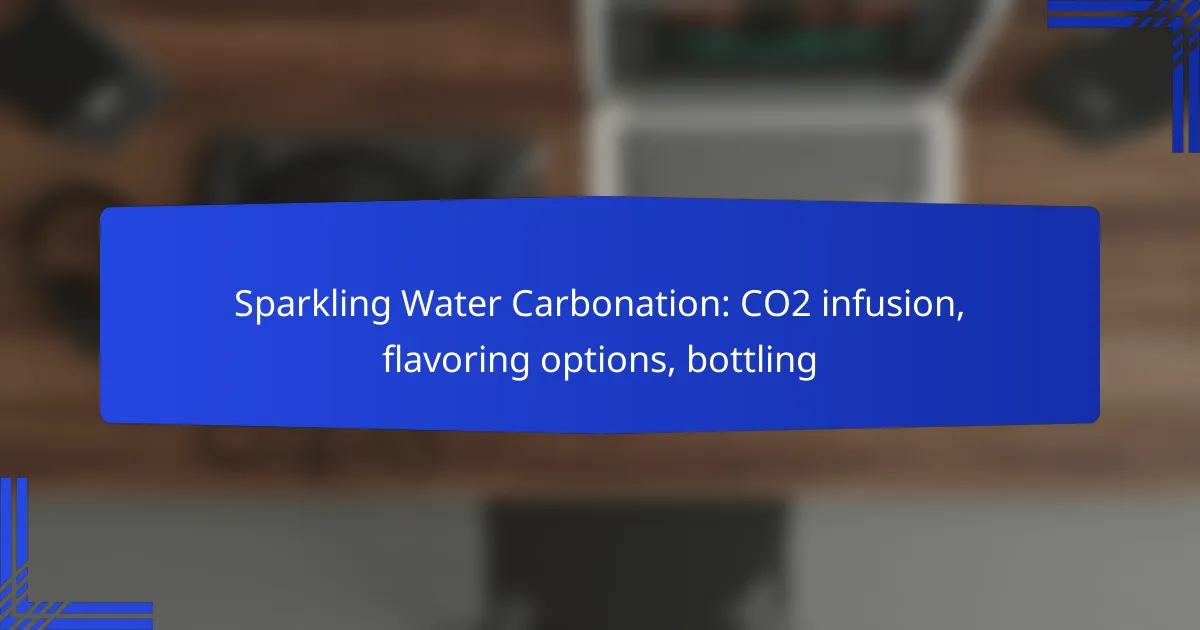Sparkling water in Australia is primarily carbonated through CO2 infusion, offering a refreshing fizziness that can be tailored with various flavoring options such as natural fruit extracts and herbal infusions. The bottling process involves careful carbonation under pressure to maintain quality and safety, ensuring a delightful drinking experience. Whether enjoyed plain or enhanced with flavors, sparkling water remains a popular choice for hydration.

What are the carbonation methods for sparkling water in Australia?
In Australia, sparkling water is carbonated primarily through CO2 infusion, natural carbonation, and home carbonation systems. Each method offers distinct characteristics and considerations for flavor and fizziness.
CO2 infusion techniques
CO2 infusion is the most common method for carbonating sparkling water, where carbon dioxide gas is dissolved into water under pressure. This process allows for precise control over the level of carbonation, typically ranging from light to very fizzy.
Commercial producers often use large tanks to infuse CO2 into water, ensuring consistent quality and flavor. Consumers can find various brands with different carbonation levels, catering to personal preferences.
Natural carbonation processes
Natural carbonation occurs when water is sourced from mineral springs, where it is already infused with carbon dioxide from geological processes. This method results in a unique flavor profile, often enhanced by the minerals present in the water.
While less common than CO2 infusion, natural sparkling water offers a distinctive taste and is often marketed as a premium product. Brands may highlight the origin of their water source to appeal to consumers seeking authenticity.
Home carbonation systems
Home carbonation systems allow individuals to carbonate water at home using devices like soda makers. These systems typically involve filling a bottle with water and then injecting CO2 from a canister, giving users control over the carbonation level.
When using home carbonation systems, it’s important to follow manufacturer guidelines to avoid over-carbonation, which can lead to excessive fizz and potential spills. Many systems also allow for flavoring options, enabling users to create custom sparkling beverages.
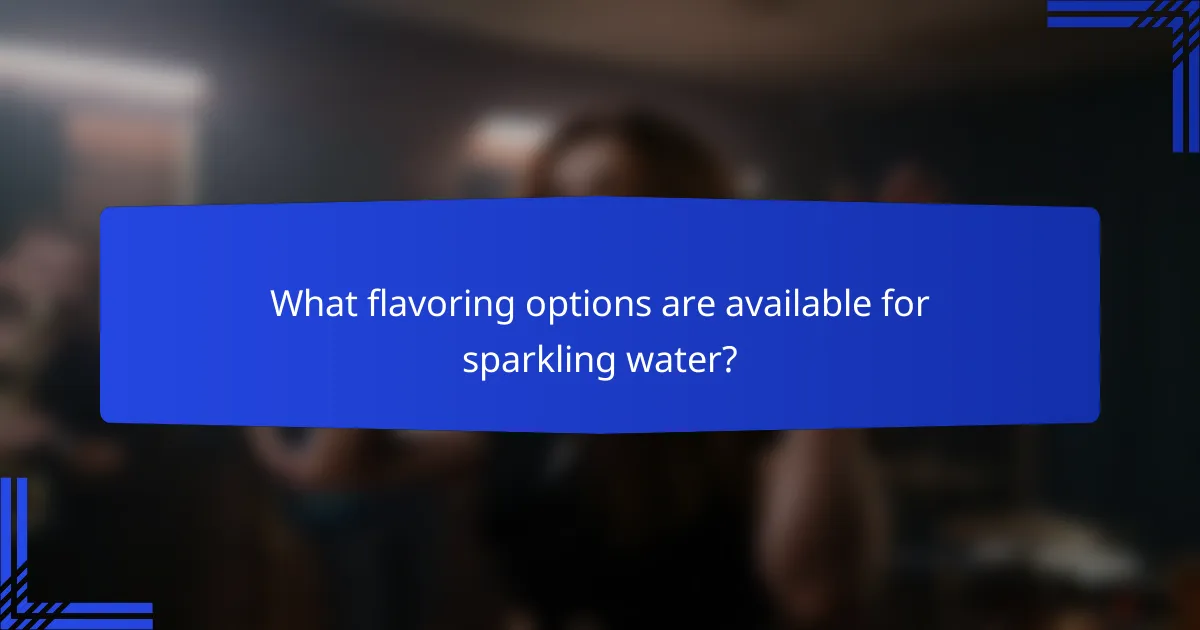
What flavoring options are available for sparkling water?
Sparkling water can be enhanced with a variety of flavoring options, allowing for a customized drinking experience. Common choices include natural fruit extracts, herbal infusions, and products from commercial flavoring brands.
Natural fruit extracts
Natural fruit extracts are a popular choice for flavoring sparkling water, providing a fresh and authentic taste. Options like lemon, lime, berry, and peach can be used to create vibrant flavors without artificial additives.
When using natural extracts, consider the concentration, as a little can go a long way. Typically, a few drops or a teaspoon per liter of water is sufficient to achieve a noticeable flavor.
Herbal infusions
Herbal infusions offer a unique twist on sparkling water, introducing flavors such as mint, basil, or chamomile. These infusions can add a refreshing quality and complexity to the drink.
To create herbal-infused sparkling water, steep the herbs in hot water, then cool and mix with carbonated water. This method allows for control over the intensity of the flavor, making it easy to adjust to personal preference.
Commercial flavoring brands
Commercial flavoring brands provide a wide range of pre-made options for sparkling water, often available in convenient bottles or packets. These flavors can include everything from classic cola to exotic tropical blends.
When selecting commercial flavorings, check for sugar content and artificial ingredients, as these can vary significantly. Many brands now offer low-calorie or zero-calorie options, which can be appealing for health-conscious consumers.

How is sparkling water bottled in Australia?
In Australia, sparkling water is typically bottled using a process that involves carbonation, where carbon dioxide (CO2) is infused into the water under pressure. This method not only creates the signature fizz but also requires careful handling and packaging to ensure quality and safety.
Glass bottle advantages
Glass bottles are often favored for sparkling water due to their ability to maintain carbonation better than plastic. They are non-reactive, preserving the taste without any leaching of chemicals, and are generally perceived as more premium.
Additionally, glass is recyclable and can be reused multiple times, making it a sustainable choice. Many consumers prefer the aesthetic and tactile experience of drinking from glass, which can enhance the overall enjoyment of the beverage.
Plastic bottle considerations
Plastic bottles are lightweight and less fragile than glass, making them convenient for transport and handling. However, they may not keep carbonation as effectively, which can lead to a flatter taste over time.
Another consideration is the potential for chemical leaching from certain types of plastic, especially when exposed to heat or prolonged storage. Consumers should look for BPA-free options to mitigate health concerns.
Eco-friendly packaging options
Eco-friendly packaging for sparkling water includes biodegradable materials and recycled plastics, which help reduce environmental impact. Some brands are exploring plant-based bottles that decompose more easily than traditional plastics.
Additionally, refillable systems and bulk dispensers are becoming popular, allowing consumers to fill their own containers and reduce single-use packaging. These options not only minimize waste but can also be more cost-effective in the long run.
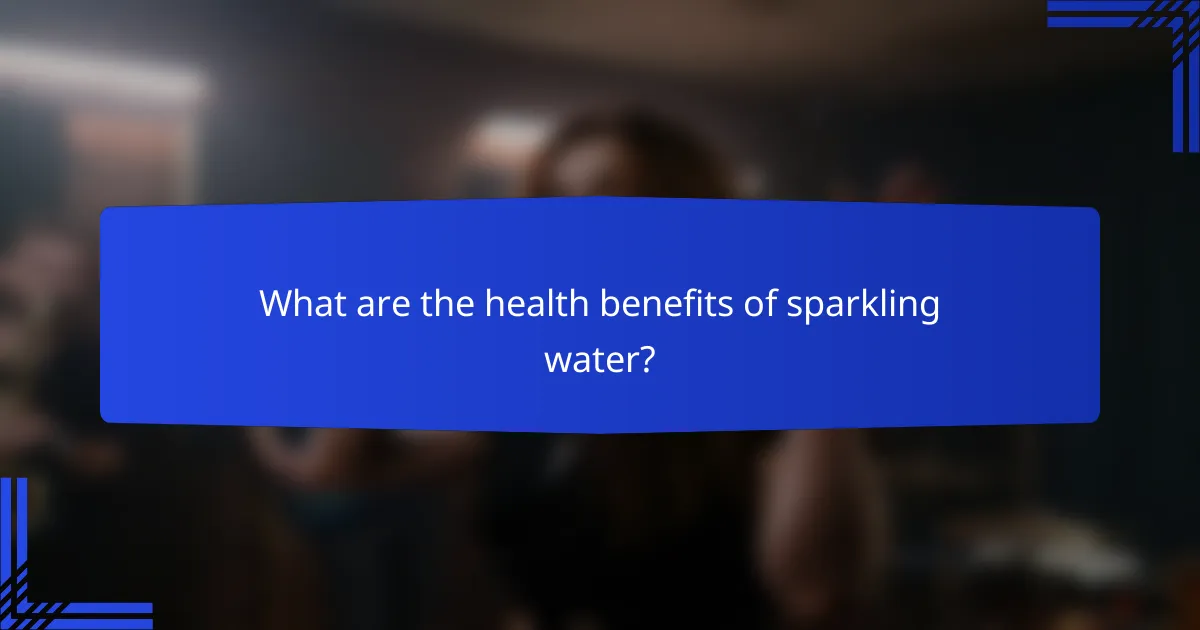
What are the health benefits of sparkling water?
Sparkling water offers several health benefits, primarily related to hydration and calorie management. It can be a refreshing alternative to sugary drinks while still providing the hydration your body needs.
Hydration benefits
Drinking sparkling water can effectively keep you hydrated, similar to still water. The carbonation does not hinder hydration; in fact, many people find the fizz more enjoyable, which may encourage increased fluid intake.
It’s important to choose sparkling water without added sugars or artificial sweeteners to maximize hydration benefits. Opt for naturally flavored options or plain sparkling water to maintain a healthy choice.
Calorie-free alternatives
Sparkling water is typically calorie-free, making it an excellent substitute for high-calorie beverages like sodas and juices. This can help with weight management and reduce overall calorie consumption.
When selecting sparkling water, check the label for any added ingredients. Many brands offer flavored varieties without calories, allowing you to enjoy taste without the extra calories associated with sugary drinks.
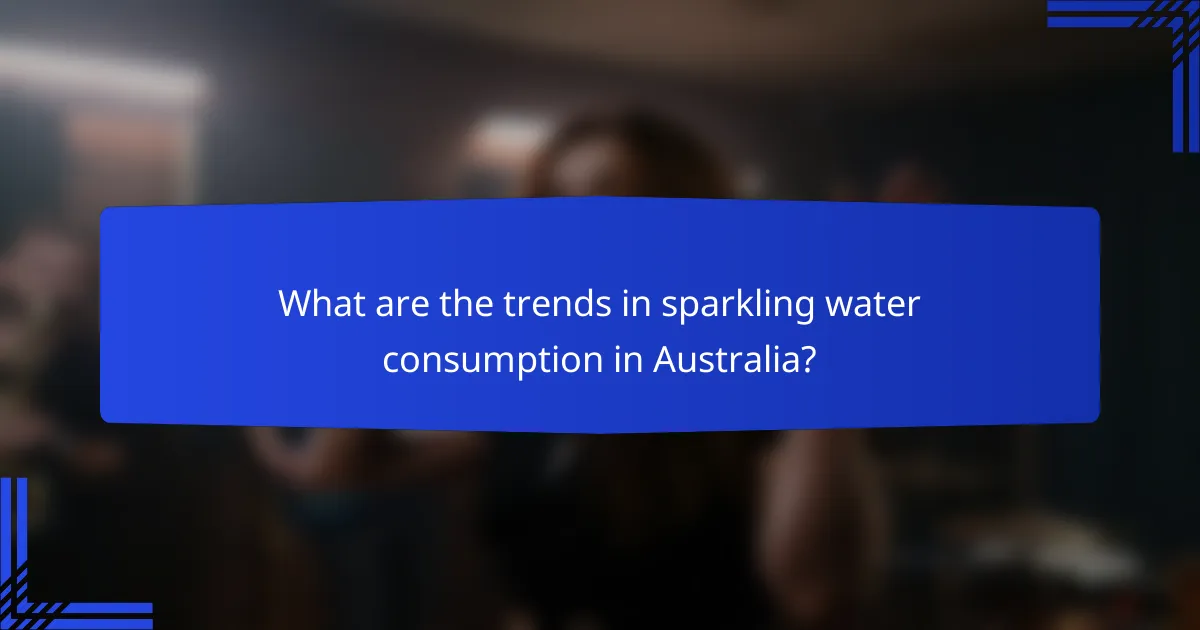
What are the trends in sparkling water consumption in Australia?
In Australia, sparkling water consumption is on the rise, driven by health-conscious consumers seeking alternatives to sugary drinks. This trend reflects a growing preference for both flavored options and home carbonation solutions.
Increased demand for flavored options
Flavored sparkling water is becoming increasingly popular among Australian consumers, as they seek refreshing beverages without added sugars. Common flavors include lemon, lime, berry, and tropical fruits, appealing to diverse taste preferences.
Brands are responding to this demand by introducing innovative flavor combinations and limited-edition releases. Consumers often look for natural ingredients and minimal additives, making it essential for brands to highlight these qualities on packaging.
Growth in home carbonation devices
The market for home carbonation devices is expanding in Australia, as more people opt to create their own sparkling water at home. These devices allow users to control the level of carbonation and experiment with flavors, providing a customizable experience.
Popular brands offer user-friendly machines that can carbonate water in minutes, with some models featuring built-in flavoring options. This trend not only caters to individual preferences but also promotes sustainability by reducing reliance on single-use plastic bottles.
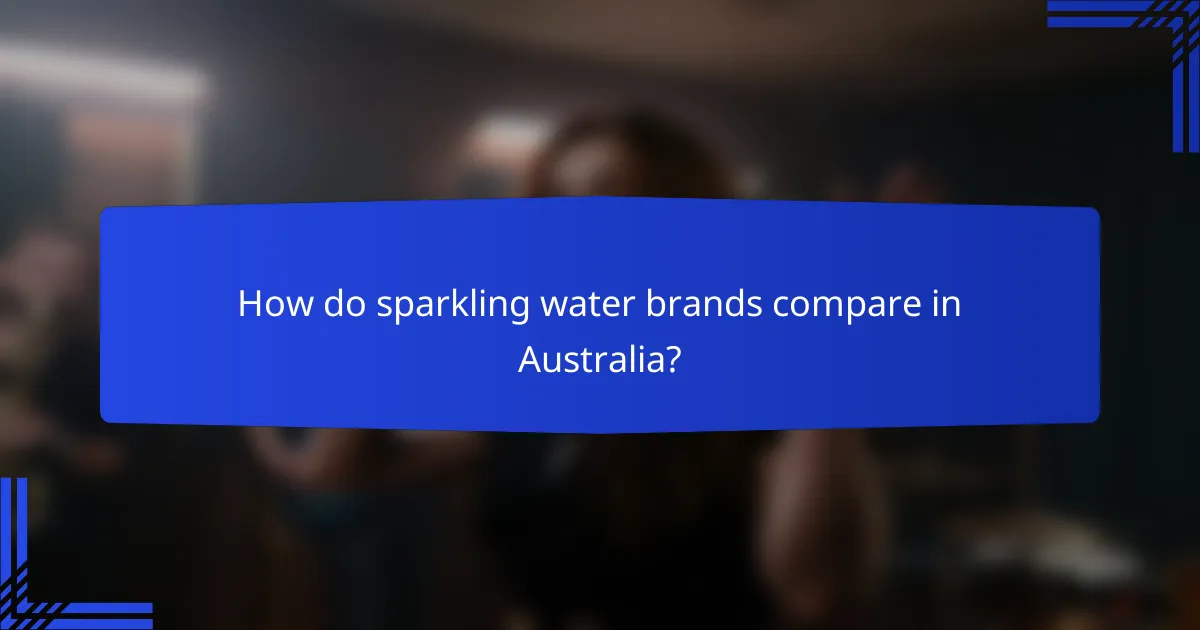
How do sparkling water brands compare in Australia?
In Australia, sparkling water brands vary significantly in terms of carbonation levels, flavoring options, and packaging. Consumers can choose from a range of local and international brands, each offering unique characteristics and price points.
Carbonation Levels
Carbonation levels in sparkling water can differ widely among brands, affecting taste and mouthfeel. Most brands offer a range from lightly carbonated to highly carbonated options, with some brands providing customizable carbonation levels through home carbonation systems.
When selecting a sparkling water, consider your preference for fizziness. For example, brands like San Pellegrino and Perrier are known for their strong carbonation, while others like Mount Franklin offer a milder experience.
Flavoring Options
Flavoring options for sparkling water in Australia include both natural and artificial flavors. Many brands offer a variety of fruit-infused options, such as lemon, lime, and berry flavors, while others focus on pure, unflavored sparkling water.
When choosing flavored sparkling water, check the ingredient list for added sugars or artificial ingredients. Brands like SodaStream allow consumers to create their own flavored sparkling water at home, providing flexibility in taste and health considerations.
Bottling and Packaging
Bottling and packaging vary among sparkling water brands, influencing convenience and environmental impact. Many brands offer both glass and plastic bottles, with glass bottles often perceived as more premium.
Consider the sustainability of packaging when selecting a brand. Some companies, like Sparkling Spring Water, promote eco-friendly packaging options, while others may use traditional plastic. Reusable bottles and home carbonation systems can also reduce waste and provide a cost-effective solution for sparkling water enthusiasts.
